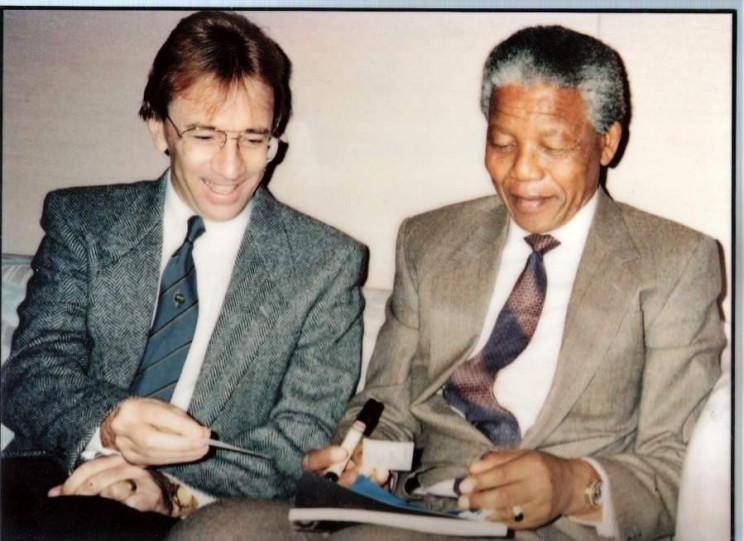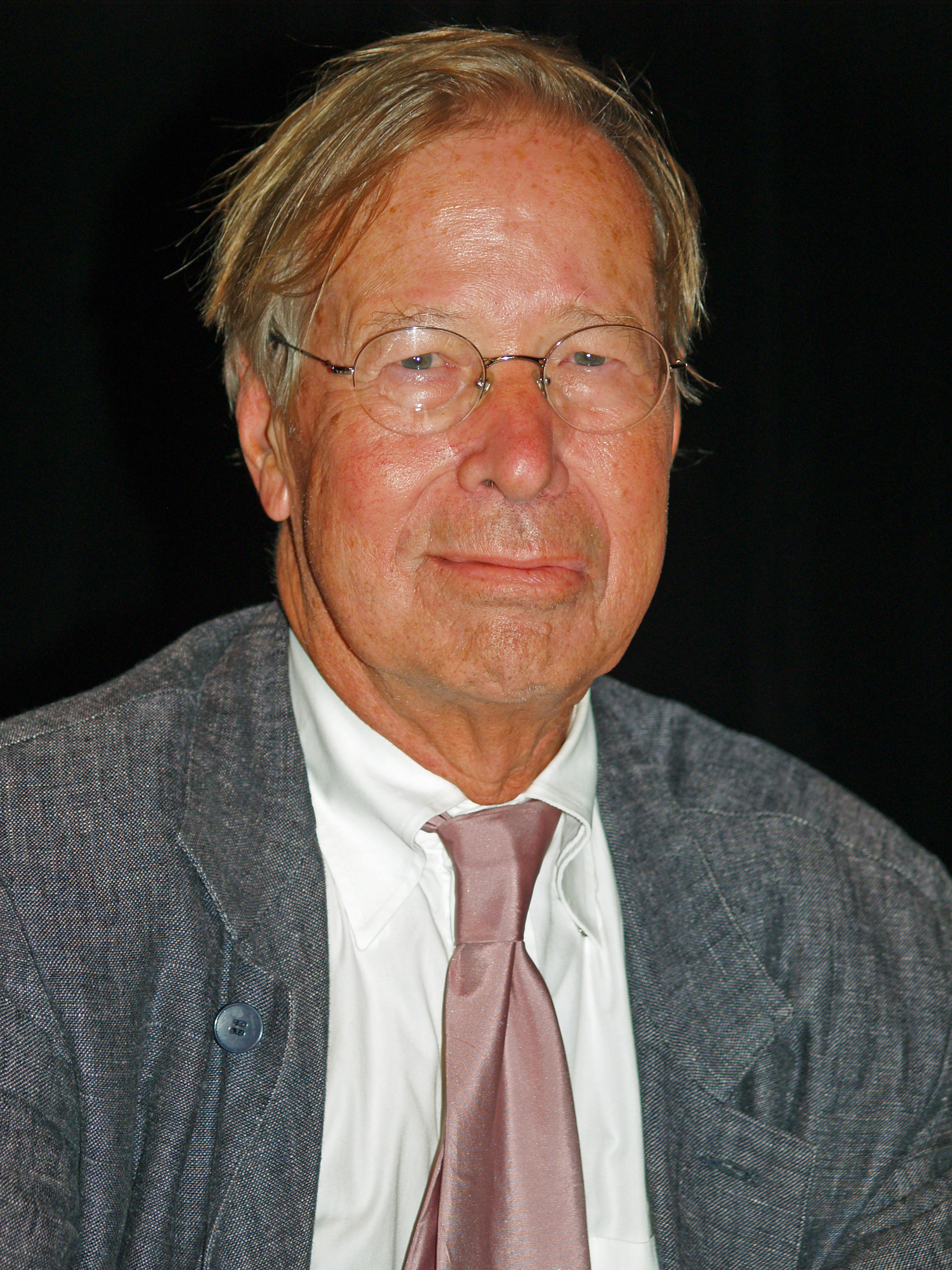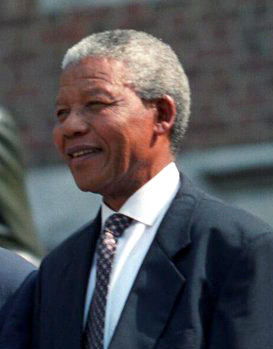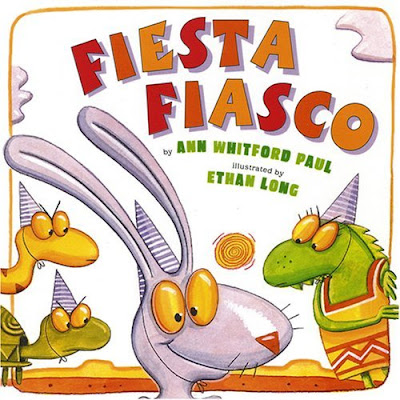new posts in all blogs
Viewing: Blog Posts Tagged with: bilingual, Most Recent at Top [Help]
Results 1 - 6 of 6
How to use this Page
You are viewing the most recent posts tagged with the words: bilingual in the JacketFlap blog reader. What is a tag? Think of a tag as a keyword or category label. Tags can both help you find posts on JacketFlap.com as well as provide an easy way for you to "remember" and classify posts for later recall. Try adding a tag yourself by clicking "Add a tag" below a post's header. Scroll down through the list of Recent Posts in the left column and click on a post title that sounds interesting. You can view all posts from a specific blog by clicking the Blog name in the right column, or you can click a 'More Posts from this Blog' link in any individual post.

By: ChloeF,
on 3/7/2014
Blog:
OUPblog
(
Login to Add to MyJacketFlap)
JacketFlap tags:
Nelson Mandela,
*Featured,
raymond,
philosophy of law,
legal philosophy,
Ray Wacks,
raymond wacks,
Ronald Dworkin,
wacks,
without express,
Law,
Philosophy,
mandela,
VSI,
society,
morals,
Very Short Introductions,
Add a tag

By Raymond Wacks
The law is always news. It plays a central role of law in our social, political, moral, and economic life. But what is this thing called law? Does it consist of a set of universal moral principles in accordance with nature? Or is it merely a collection of largely man-made rules, commands, or norms? Does the law have a specific purpose, such as the protection of individual rights, the attainment of justice, or economic, political, and sexual equality? Can the law change society as it has done in South Africa?

Nelson Mandela, the first President of a democratic South Africa, with the author Raymond Wacks, following his release from 27 years of imprisonment.
Even the sensationalist criminal trials—real or imagined, staple movie and television fare—capture features of the law that routinely vex legal philosophers. They spawn awkward questions about moral and legal responsibility, the justifications of punishment, the concept of harm, the judicial function, due process, and many more. The philosophy of law, in other words, is by no means exclusively an abstract, intellectual pursuit. Indeed several legal philosophers contribute to important contemporary discussions about highly controversial questions such as abortion, euthanasia, pornography, and human rights.
No society can properly be understood or explained without a coherent conception of its law and legal doctrine. The social, moral, and cultural foundations of the law, and the theories which both inform and account for them, are no less important than the law’s ‘black letter’. Among the many topics within legal theory’s spacious borders is that of the definition of law itself: before we can begin to explore the nature of law, we need to clarify what we mean by this often elusive concept.

Ronald Dworkin (1931-2013) sought to show that law is inextricably bound up with moral values.
One question that continues to dominate legal philosophy is the seemingly intractable problem of the relationship between law and morals continues to dominate academic debate. Can law be as neutral and value-free as legal positivists seek to demonstrate, or is law steeped in inescapable moral values? Can law be analytically severed from morality? Or is the pursuit of neutrality and objectivity by legal positivists—from John Austin and Jeremy Bentham to the Realists and their modern followers—a sanguine will o’ the wisp? Is a ‘science of law’ (exemplified by Hans Kelsen’s ‘Pure Theory’) a fantasy? Is HLA Hart’s focus upon the ‘municipal legal system’ still helpful in our age of globalization and pluralism? If law does have a purpose, what might it be? Can it secure greater justice for all who share our planet?
None of these questions has a simple answer. But it is in their asking—and careful reflection upon them—that we might better understand the nature and purpose of law, and thereby perhaps secure a more just society. In the face of injustice, it is easy to descend into vague oversimplification and rhetoric when reflecting upon the proper nature and function of the law. Analytical clarity and scrupulous jurisprudential deliberation on the fundamental nature of law, justice, and the meaning of legal concepts are indispensable tools. Legal philosophy has a decisive role to play in defining and defending the values and ideals that sustain our way of life.
Raymond Wacks is Emeritus Professor of Law and Legal Theory. His areas of interest are legal theory, privacy, and human rights, and he has published numerous books and articles on various aspects of law, including Understanding Jurisprudence: An Introduction to Legal Theory (OUP, 2012), Law: A Very Short Introduction (OUP, 2008), and Privacy: A Very Short Introduction (OUP, 2010), and Philosophy of Law: A Very Short Introduction (OUP, second edition 2014)
The Very Short Introductions (VSI) series combines a small format with authoritative analysis and big ideas for hundreds of topic areas. Written by our expert authors, these books can change the way you think about the things that interest you and are the perfect introduction to subjects you previously knew nothing about. Grow your knowledge with OUPblog and the VSI series every Friday, and like Very Short Introductions on Facebook. Subscribe to Very Short Introductions articles on the OUPblog via emailor RSS.
Subscribe to the OUPblog via emailor RSS.
Subscribe to only philosophy articles on the OUPblog via emailor RSS.
Image credit: (1) By Raymond Wacks: Nelson Mandela with Raymond Wacks. Do not reuse without express permission. (2) By David Shankbone. CC-BY-SA-3.0 via Wikimedia Commons
The post Law and the quest for justice appeared first on OUPblog.


By: Alice,
on 2/11/2012
Blog:
OUPblog
(
Login to Add to MyJacketFlap)
JacketFlap tags:
History,
Africa,
south africa,
mandela,
prison,
trial,
nelson,
apartheid,
johannesburg,
kenneth,
Nelson Mandela,
*Featured,
judicial system,
Kenneth S. Broun,
Rivonia trial,
Saving Nelson Mandela,
broun,
rivonia,
defendants,
codefendants,
Add a tag
By Kenneth S. Broun
 Twenty-two years ago, on the 11th of February 1990, Nelson Mandela walked out of a South African prison, a free man for the first time in twenty-seven years. He immediately assumed the leadership role that would move South Africa from a system of apartheid to a struggling but viable democracy. No one person, not even Nelson Mandela, was solely responsible for this miracle. But no one can doubt the crucial role that he played in the process that brought a new era to South Africa, or that his intellect, sturdy leadership, and political savvy made this process far more peaceful than anyone had predicted would be the case.
Twenty-two years ago, on the 11th of February 1990, Nelson Mandela walked out of a South African prison, a free man for the first time in twenty-seven years. He immediately assumed the leadership role that would move South Africa from a system of apartheid to a struggling but viable democracy. No one person, not even Nelson Mandela, was solely responsible for this miracle. But no one can doubt the crucial role that he played in the process that brought a new era to South Africa, or that his intellect, sturdy leadership, and political savvy made this process far more peaceful than anyone had predicted would be the case.
That Mandela was alive to assume this leadership is a remarkable story. When the trial that led to his conviction began in 1963, most in South Africa and abroad predicted that he and his codefendants would be hanged. Mandela and his codefendants faced charges brought under the recently enacted Sabotage Act, the violation of which carried the death penalty. The South African government proudly announced that it had brought to justice men who had planned and begun to carry out a campaign for its violent overthrow. The country’s press celebrated the success of the police in catching the violent criminals who represented a very real threat to the way of life of white South Africa. Foreign representatives were told by informed sources that the maximum sentence for the top leadership was possible, indeed likely.
The 1963–64 trial of Mandela and his co-defendants is known as the Rivonia trial, named for the Johannesburg suburb in which most of the defendants were arrested. Other defendants included ANC leaders Walter Sisulu, Govan Mbeki, the father of future South African president Thabo Mbeki, and the South African Indian leader, Ahmed Kathrada.
A team composed of lawyers of great intellect, legal ability and integrity defended the accused. They applied their considerable skill to a cause in which they deeply believed. The accused, through both their statements to the court and their testimony, demonstrated strength of character and devotion to a cause that even a hostile judge could not, in the end, ignore. The conduct of the judge before whom the case was tried illustrates both the strength and weaknesses of the South African judicial system. The judge may well have been independent of the government and its prosecutor, but his own prejudices guided him through much of the proceedings. The prosecutor, who was described by a visiting British barrister as a “nasty piece of work” may have hurt, rather than helped his case by engaging in a political dialogue with the defendants who took the witness stand.
White South African opinion was clearly in favor of the prosecution and harsh sentences for the accused. But international opinion was almost unanimous in its support for them, particularly in the newly independent African states and the Communist bloc. There was also considerable attention to the trial on the part of the major Western powers, or at least concern that death sentences would sour relations with African and other Third World people. The question was how the West, and in particular the United States and United Kingdom, might attempt to influence the trial’s outcome.
Perhaps the key point in the trial was Nelson Mandela’s statement from the dock, a statement made in lieu of testimony. He ended the statement with these words:
During my lifetime I have dedicated myself to the struggle of the African People. I have fought against white domination, and I have fought against black domination. I have cherished the ideal of a democratic and free society in which all persons live together in harmony and with equal opportunities. It is an ideal which I hope to li
"Use the content-rubric to rate the students' writing from 0 to 2: zero if their response lacks an introductory thematic sentence and closing statement, 1 if they show evidence of either."
As I tried following these instructions during an after-school staff meeting, I found it impossible to determine whether my first grader A___'s writing in Spanish lacked theme and closure, or contained both, for that matter. But my confusion wasn't due to what she'd done or her lack of trying.
In her five months of struggling in room 103, A__ had regularly filled a half-sheet of paper with letters she carefully scribed while sounding out each syllable. And although her lettering was wonderful, in fact her compositions were unreadable, oftentimes even to their author. That hadn't stopped her.
Problem was, A__'s written words lacked most of the vowels, some consonants, and each of her lines normally contained only one space separating two long clusters of indecipherable prose. At the same time, such work showed improvement since she'd entered first grade almost unable to read.
"Zero if the response lacks an introductory--" I repeated to myself. How could I know if it did? She might have a strong thematic sentence and an even better closure, but I was expected to give her a zero simply because I couldn't decipher her heroic compositions. I was tempted to leave an N/A, which translated as "not observed," but then I would have had to explain my veering from the grading system.
During those five months A__ had managed to reach a 6 reading level, which put her on the path of failing to reach grade level by the end of the school year. I had worried about her in other ways, wondering if her belabored development was a sign of ADHD, dyslexia, or an even more serious learning disorder.
Teachers worry about such things, sometimes more than they should. For various reasons, every year we have kids who can't, won't or don't make it. We don't reach them. It's not just in writing; it's in every subject and can even encompass their growth as little human beings.
Anyway, A__'s prospect of going on to second grade with skills, abilities, and knowledge she'd need to survive, much less prosper, didn't seem likely. I would need to "staff" her, which would mean a meeting with a team of professionals to determine how best to meet her needs, since her teacher hadn't been able to do it.
I didn't mind the implicit idea of failure in this, since I know I'm no master teacher. It was the implicit branding of A__ that I dreaded. She and her parents would suffer the too common stress and even humiliation of a student diagnosed as failing.
Given her and my situation, I'd begun having her sit regularly with others at my table, instead of writing independently.
One morning she asked, "Cómo se escribe Hawaii?" I wrote it on a note for her, even though spelling U.S. states wasn't how I had intended to help her. When she showed me her completed sheet, I was surprised she hadn't done the usual half-page. There were only five lines. Less than thirty words. But each one was spaced. Almost no letters were missing. And I could read them. A__ had made a qualitative leap! We celebrated her achievement that day with song, dance and chants.
But A__ wasn't done.
A couple of days later she wrote seven lines. While the spelling and spacing was about the same, she had added something new. Sentences. With capitals and periods. Even the lone sentence that wasn't grammatically perfect was close to.
A__ who was at level 6 in reading had made a syntactic leap that those at level 16 had only begun to tackle, in some cases not as successfully. We celebrated again, only harder. A__ had become not just the class model for persistence, but also our model for something higher--writing excellence.
The composing of a few five-word sentences may not sound like major achievement, but in this case it was sufficient to affect a heart that often gets hardened by the job of teaching in U.S. classrooms. I felt good.
But she wasn't done.
For our Valentine's party, we worked like Santa and his elves do on the 24th, in our case, getting the kids' cards for their parents ready. I'd sent blank cards home for parents to make one for their kid, and my plan was to have each parent and child share theirs in front of the class.
As they took turns reading aloud, I realized I didn't know what the kids had written, even though I'd helped them with revisions. I'd been too much editor and not enough listener. Some of the more advanced ones had created some great, even beautifully poetic pieces, which I wish I could share, but can't since you're not a part of room 103.
When A__ finished reading to her father, I realized again that I hadn't heard what she'd read. All I'd heard was her loud, proud voice smoothly and unhesitatingly enunciate every word, from beginning to end. To me, the content, though intelligible, wasn't the most important thing.
When I looked at the faces of the parents who didn't know of A__'s past, I so much wanted them to know what she had struggled through, what her achievement amounted to.
I began explaining the significance of the words that she had very fluidly read to them, how wonderful it was that she could even read her own words, and how proud they should feel for her. I was only able to mutter out half of this as I made my way to where we'd posted a display of A__'s recent gains. I did manage to point to it. That's the most I'm capable of while crying.
One by one the parents approached to examine her work, nodding and talking amongst themselves. I couldn't make out what they said because I was all choked up with my own heartfelt pride in her.
Unintentionally, A__ had accomplished one more thing. I'd challenged the class to write something so excellent it would make their parents cry, promising a prize to whoever succeeded. But all the parents had succeeded in holding their emotions back. Only the teacher had succumbed. By default, A__ had won the prize.
I lay claim to A__'s reading as my best Valentine, which makes it worth a lot higher than a 2 on a content rubric. Teacher's prerogative. That's all I wanted to share.
But then again, A__ may not be done yet.
© Rudy Ch. Garcia 2008
.jpg?picon=834)
By:
Mary Cunningham,
on 2/4/2008
Blog:
Cynthia's Attic Blog
(
Login to Add to MyJacketFlap)
JacketFlap tags:
friendship,
sisters,
hospice,
mandela,
south africa,
kruger,
table mountain,
hospice,
kruger,
south africa,
sisters,
mandela,
table mountain,
Add a tag

Okay...I promised an update on my best friend's trip to South Africa,
so without further adieu...here's Diana sticking her toe in the Indian Ocean! (pretty impressive, huh?)
Molweni!
Well, I feel just like a celebrity. You know: Where in the world's Matt Lauer and Diana Black!
Mary's so right. The trip to South Africa was life-altering. For example, I didn't have a sinus infection when I left, but I do now...
No, wait. Maybe there is something a bit more profound to glean from the experience.
Like how courageous and resourceful people can be after hearing a life-altering diagnosis or forcibly removed from their homes, their neighborhoods and required to live in "houses" pieced together with metal scraps and discarded window frames.
How people can rise above wrongful imprisonment and continue to struggle against injustices to humankind.
How strong women are, and how much we are alike regardless of cultural differences.
And how everyone loves to laugh. I believe it was Victor Borge who said, "The shortest distance between two people is a smile."
The opportunity to make this trip and share it with Mary's blogger buddies sure makes me smile.
Okay, I think this is where I'm supposed to say how wonderful she is (right, Mary?), and how without her, I would be nothing. That she has made me everything I am, the woman among women I model myself after as should every other woman in the universe. (Did I forget anything? Oh, yeah...) And she's beautiful and a wonderful writer and my bestest bud. (Those last comments? Right from my heart.)
So thanks, Mary, and all of you who expressed an interest in my little jaunt. May each of you succeed with your own individual "trip of a lifetime." Be it that trek to the mailbox with your first manuscript or to a foreign corner of your imagination and/or the earth.
Hamba kakuhle (Xhosa for "go well"),
Diana
Want more pictures? Here's the link to Diana's amazing blog. You'll see amazing pictures of scenery, Diana's "sista sojourners," lions, native birds, and you'll even (almost) see a picture of a giraffe!
South African Sojourn
Leo le Chat Goes to School
by Opal Dunn; illustrated by Cathy Gale
I live next door to the Lycee Francais, and I'm forever bumping into towheads in navy uniforms, trailing their thin, effortlessly glamorous Moms. They gather in the nearby park like exotic birds, pecking at healthy snacks and chittering in rapid French.
They only serve to remind me of how my mother discouraged me from learning that language ("Spanish is more useful, you can talk to the cleaning lady") until I made a feeble stab at it in college.
By then it was too late; years of resolute resistance to all things Spanish translated into a tin ear for the language of romance, of Proust, of the Impressionists and all those fancy menus. In three trips there, I spoke about as well as Marcel Marceau--that is to say, I'm fluent in the language of manic hand gestures and panicked facial expressions.
Fortunately, this little book of first words and phrases comes with a glossary and pronunciation guide in back. Leo only speaks French, but you can lift little flaps to translate what he says. You have to tell him not to sit on the table or help him find his ball, whatever. The usual cute stuff. In French. And there's a series of these, by the way.
My son's learning Hebrew, however, and at age four is already correcting my pronunciation. That's okay, if I ever get back to Israel, I'll just brush up on my head-scratching and confused looks--the universal language of tourists.
Rating: *\*\
 by Ann Whitford Paul
by Ann Whitford Paul
illustrated by Ethan Long
Holiday House 2007
Conejo, Iguana and Tortuga stop by the market on the way to their friend Culebra's party to purchase birthday gifts for him. Iguana thinks Culebra would like a globo but Conejo convinces him that a sombrero would make a better gift. Similarly when Tortuga considers a fine tazon Conejo insists on a camise. And when Iguana and Tortuga point out that their friend would like a nice libro Conejo instead thinks pantalones make more sense.
Conejo, being a trickster rabbit, knows that his friend Culebra is a snake and his excuses for each of the gifts -- "He can wear the pants once he grows his legs" -- allows him to appropriate the useless gifts for himself once they are opened at the party. Dressed in Culebra's hat, shirt and pants he is expelled for being a rude friend while Culebra, Iguana and Tortuga continue to enjoy the fiesta.
Shame-faced Conejo returns with proper gifts, the book, bowl and balloon originally considered at the market. Snake is happy and while the four friends settle in for some fine birthday torta they discuss whose birthday comes next. Mine! Shouts Conejo excitedly, and everyone knows exactly what to get him: a touristy outfit of a sombrero, camise and pantalones.
Telling the story with Spanish words peppered and reinforced throughout with pictures allows for an easy immersion lesson in bilingualism. It feels a bit awkward up front as the characters settle in at the market but quickly the words become familiar as the story gains it's momentum and pacing. The bright-colored cartoon illustrations are warm, humorous, and give very solid contextual clues about how the characters feel and what they are talking about.
There's a fine line between a book like this which feels like a tale told from the Mexican desert and the deliberate teaching books of Dora the Explorer. Whenever I see anything Dora I get this hinkey feeling climbing up my back, as if the books were intended to help gringo children better communicate with the children of their nannies and housekeepers. There's something that rings just a tad false about all that PBS bilingualism, even while I know that it's really intended for the Spanish speaking children in the audience. The wording and the lessons feel so deliberate in a way that the other educational programming doesn't and it sits poorly with me.
Not so much in Fiesta Fiasco, where the limited and simple vocabulary (with a pronunciation guide for parents on the copyright page) are aimed at playfully at introducing new language to readers for whom all words are new language. Like I said, it's a fine line, but one I think is well handled here in a non-pedagogical way.









Rudy:
All I can say is THANK YOU.
Thank you for the work that you do day in and day out and for not giving up on students like A_____.
Thank you for sharing these experiences with us and inspiring us to be the best we can each day.
Thank you, thank you, thank you.
What a wonderful, inspirational piece, Rudy. You made me cry on this sunny Saturday morning, but in a good way.
I'm just grateful someone like A_____ has a caring teacher such as you to have faith in her.
As a college admissions director I know for a fact that experiences like this change a child's life, and their educational paths are put back on course, often due to just one caring educator. Bravo!
This was really something else. It made me feel in a way that only the best of movies can do. I hope the parents understand how important you are.
Rudy,
Will your administration have a chance to read this blog and see how much you give your students and how much you care? They need to. You've made a huge difference for this child and many others. Never stop.
Gracias, gracias, gracias, for seeing that A and the others need the words, need the education that is liberation, and for having faith their learning hearts and minds need.
Lisa
Hi Rudy,
I'm teaching college-level ESL writing now. I know the joy of seeing words on paper and reading an occasional perfect sentence. Bless our students for not giving up despite the pressure to produce "an introductory thematic sentence and closing statement."
As always, thanks for sharing your wonderful writing and experiences with me.
i bet sometimes you shake your head in shock and awe that school rules and administrators can be such as they are.
then along come a series of victories with kidlets like A____ and clarity hits you right between the ventricles.
Not only the teacher succumbed. That's lovely and inspiring. Thank you.
You've found it. Your calling, you have forever made a difference in not only your students lives, but ours as well.
Vickey/SIL
U MD ME CRY 2
Pocho
Thanks for sharing - In my eyes you ARE a master teacher. It is moments and situations like this that touch our hearts, and remind us why we became teachers.
b.
Rudy...
I had to work hard to post this comment. Post #12 nearly derailed me but I persisted.
I got a few sentences into your post, knew this one was gonna do it for me. Eyes are still a little moist.
My wife is a social worker. Has done wonderful things working on crisis intervention with families on the brink. Now works with foster care teens about to be reach majority age and needing guidance on how to be productive and self-sufficient adults.
You as a teacher, my wife as a social worker, others who take the path of helping shape people's lives: you guys make a profound difference. Memories of you will be lasting, held dearly by A___ and every other student whose life you touch.
Thanks for sharing.
Chris Bauer
Powerful and beautiful, Rudy. Mil gracias for writing this.
Great piece.
Bravo! For all the A_____ students who are struggling and persevering in our classrooms.
Gracias Rudy
saludos,
René
Ruddy,
That's an amazing story. As a fellow teacher and classmate, I would agree that those are truly the merits our students should be rewarded by, not by one test or a rubric created by some teacher in a middle/upper class community. I'm so proud of you as a teacher!
B
I am not only proud of you and her but refreshed and rejuvenated. How lucky are we to have the ability to touch, love and actually change little lives that matter. I love you and cherish therse special moments because they make a difference in those little one's lives and in us "big one's " too. Love ya and you made me cry too.
A. Olivas
Rudy,
Thank you so much for capturing the struggles and the miracles that we witness everyday in our classrooms. Sometimes, as teachers, we think it is about us redeeming our students, when it is really about how we redeem each other.
Felicidades!
Stacy